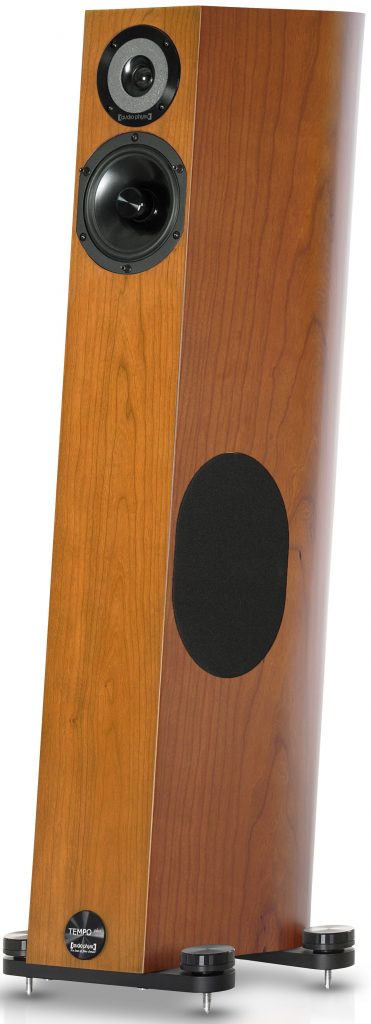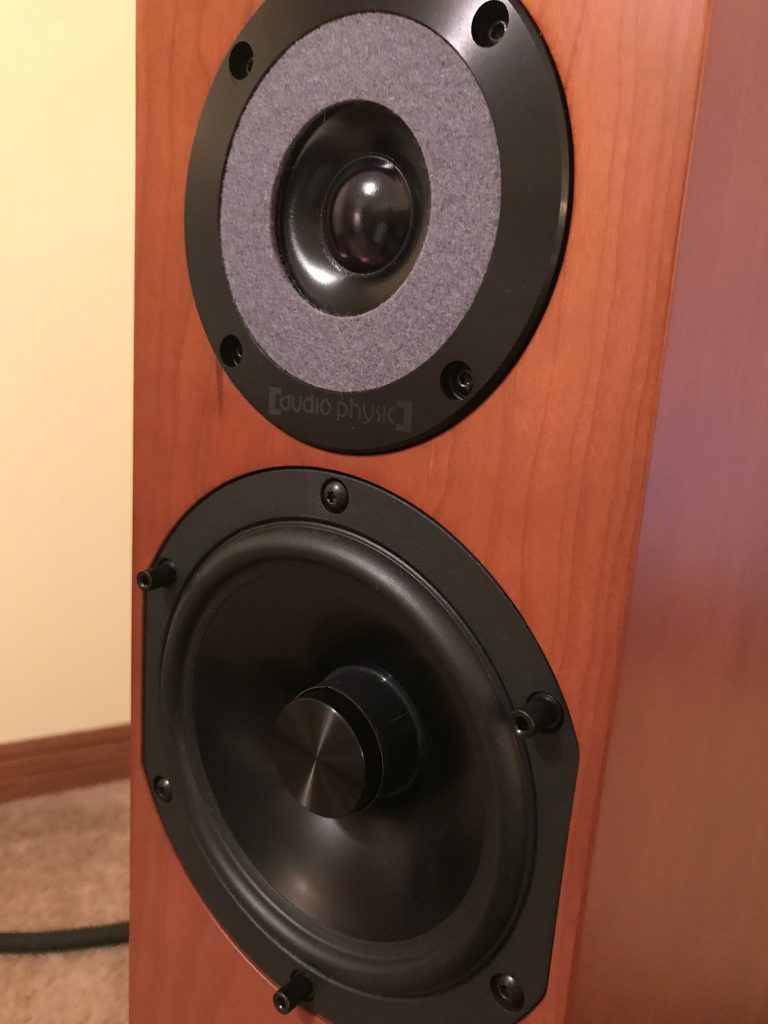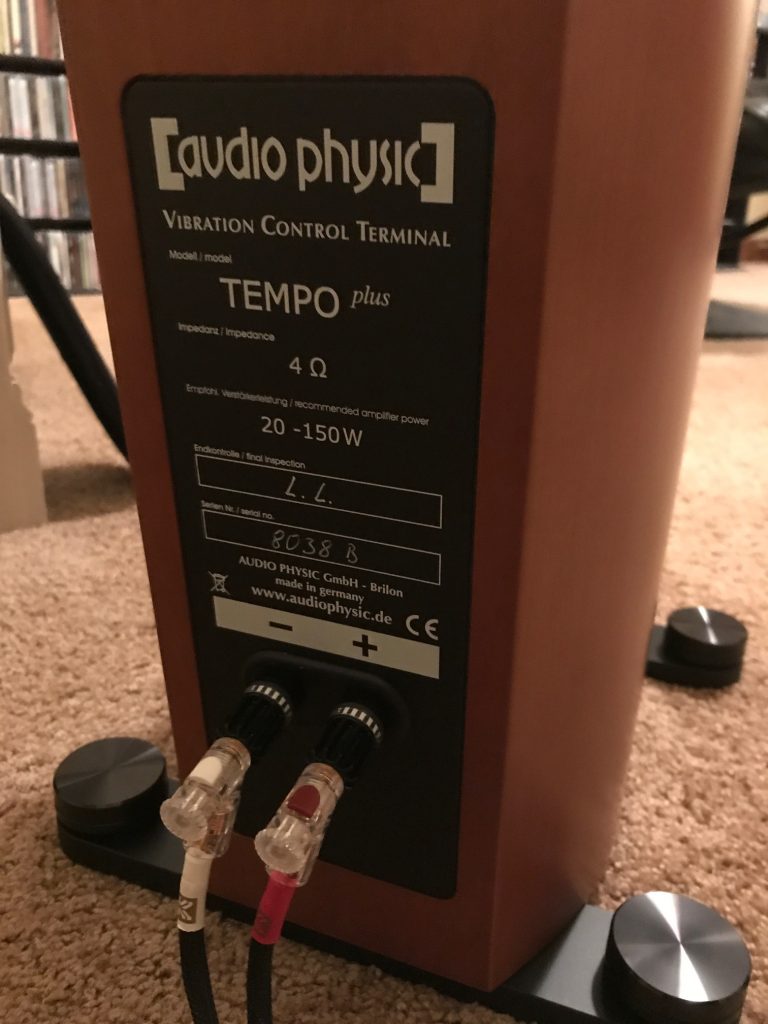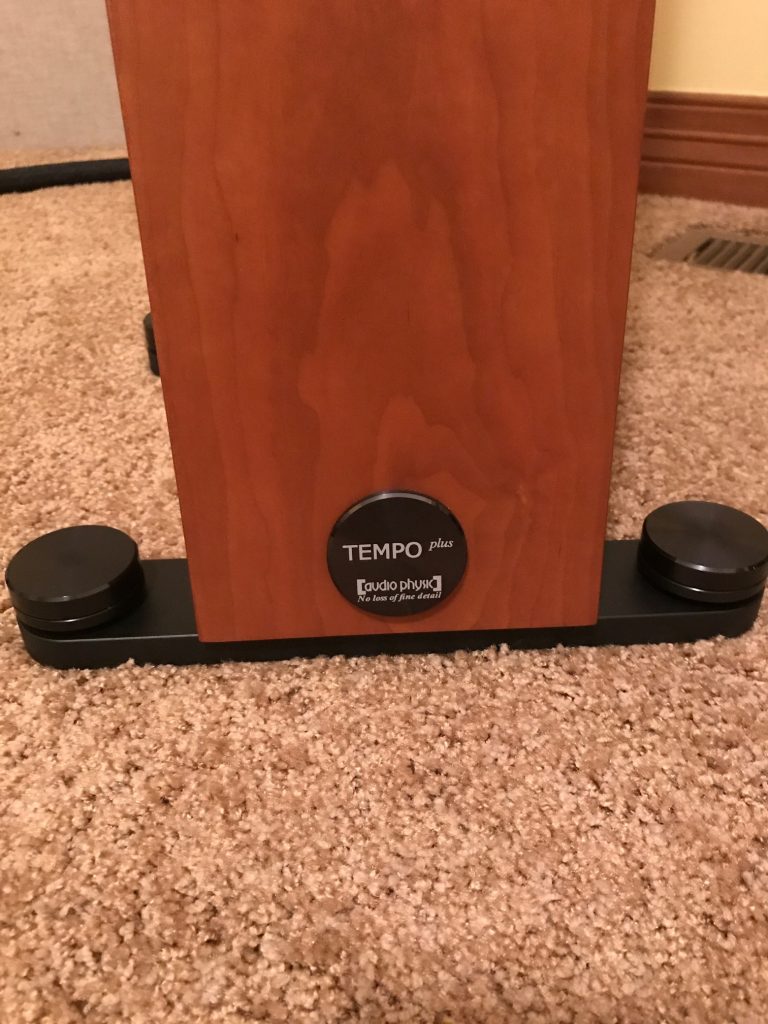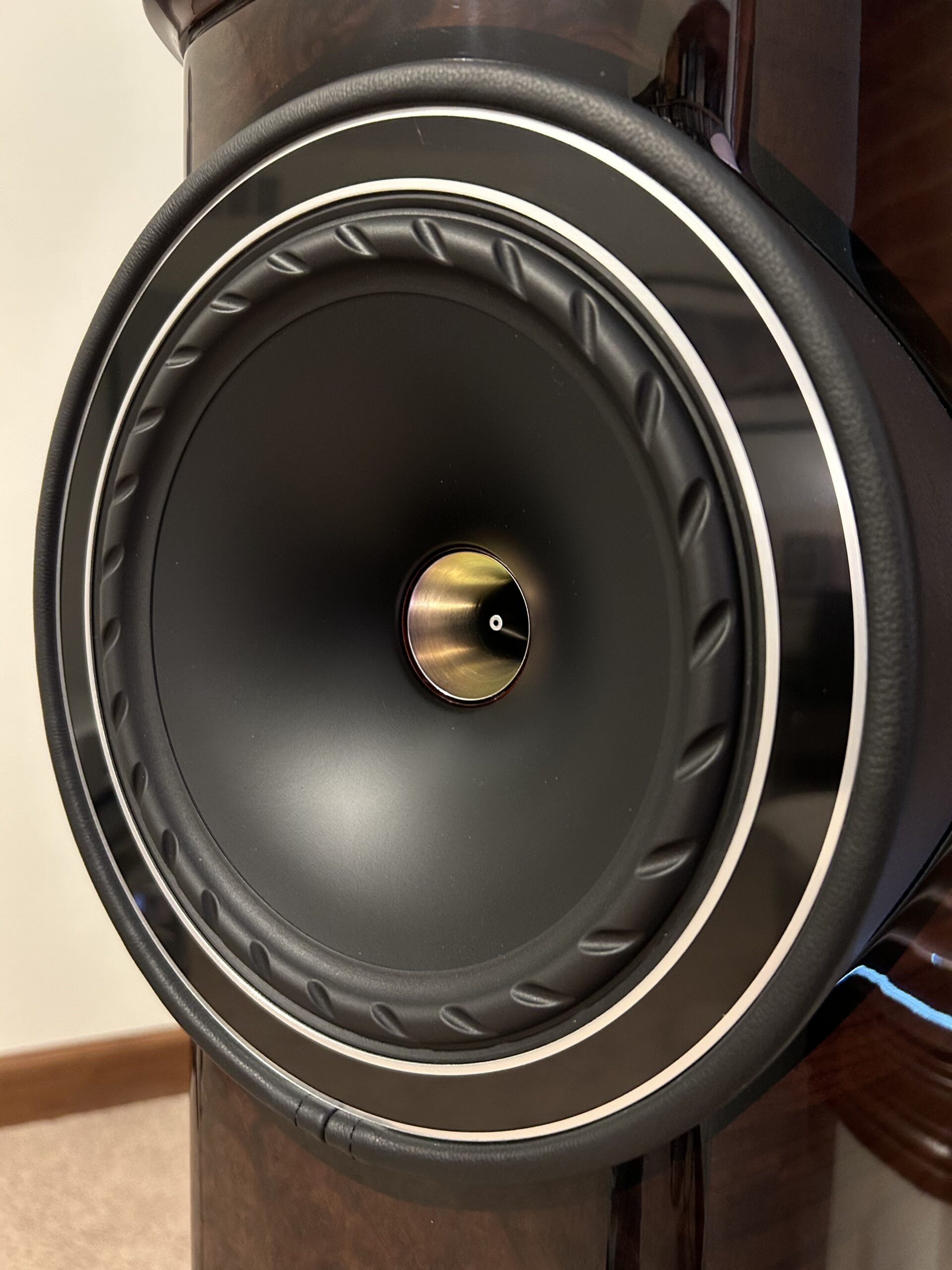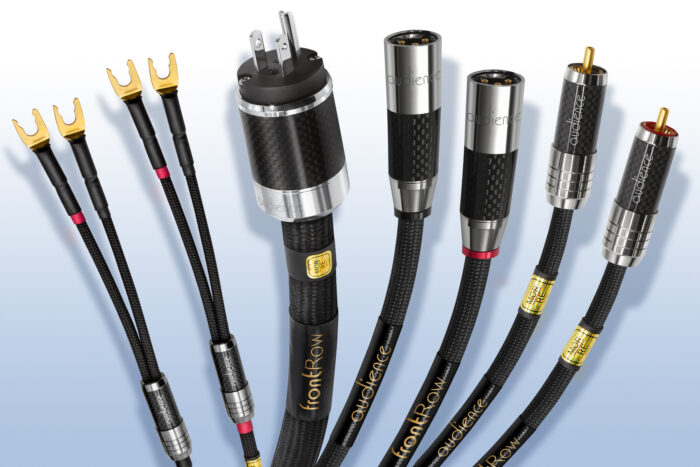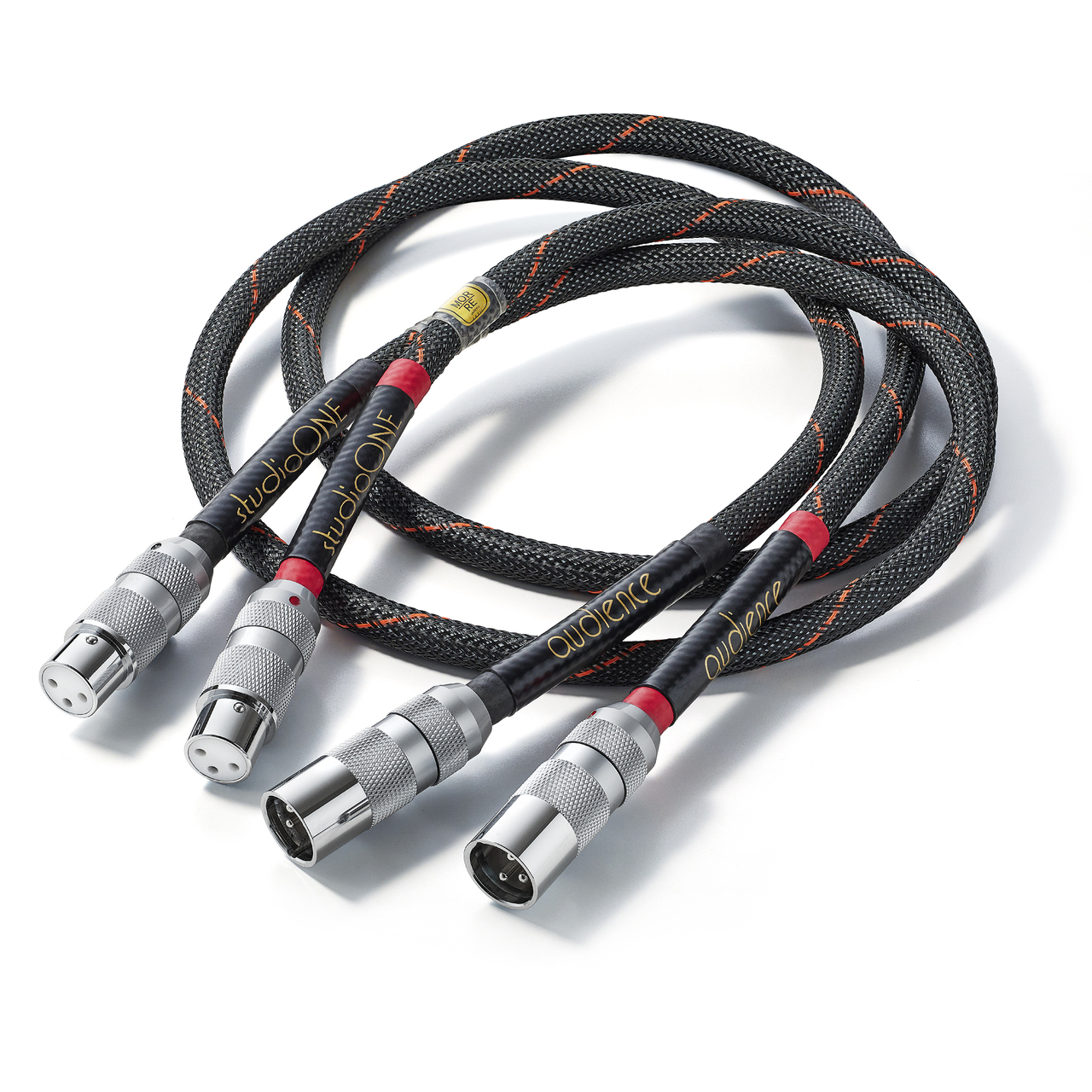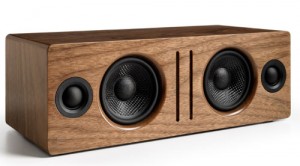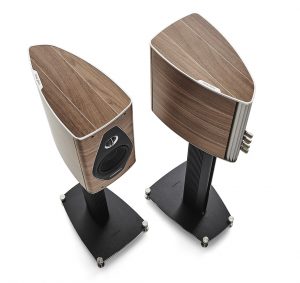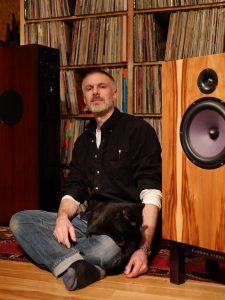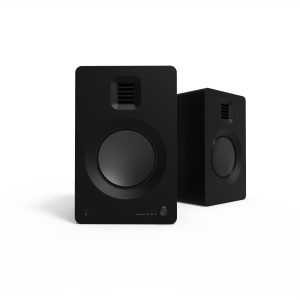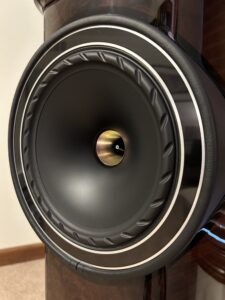German loudspeaker manufacturer Audio Physic celebrated its 30th anniversary in 2015. In the world of high-end audio, 30 years is quite an achievement. Equally laudable, Audio Physic's initial loudspeaker, the Tempo, has been in continuous production since 1986, albeit in numerous evolutionary incarnations. The latest version of the Tempo, the Tempo plus, embodies everything that Audio Physic has learned about high-performance loudspeaker design.
From the company's inception, Audio Physic's design brief has focused on musical detail and soundstage precision. Adopting the motto, "No Loss of Fine Detail," company principal and chief designer, Manfred Diestertich, places a high priority on eradicating resonances, and the technologies employed in the Tempo plus reflect that. Having exhausted the capabilities of OEM driver manufacturers, Audio Physic partnered with Wavecor of China to design and manufacture bespoke transducers tailored to each loudspeaker in its lineup. The Tempo plus is a four-driver three-way floorstanding design that incorporates some unique technologies. Starting with the woofers, Audio Physic employs two 7" aluminum drivers operating up to 150Hz. What separates the Tempo plus from other loudspeakers is the manner in which they're utilized: mounted on the sides of the cabinet in a push-push arrangement, which is reported by Audio Physic to cancel vibrations and the resultant excitation of cabinet resonances they can cause. The midrange driver comprises a 5.9" ceramic-coated aluminum cone, equipped with an aluminum phase plug. Dubbed the Hyper-Holographic Cone Midrange (HHCM), the transducer incorporates a unique dual-basket design that combines aluminum for effective heat dissipation and plastic for internal damping. Additionally, the cone diaphragm itself employs Audio Physic's Active Cone Damping II, which constitutes a U-shaped elastic ring affixed to the rim of the driver for dampening the ringing endemic to metal and other stiff cones. For the tweeter, the Tempo plus uses a seeming conundrum, a cone. While nearly every competing loudspeaker utilizes a dome, Audio Physic, not content with the breakup and ringing associated with many such drivers, designed a 1.75" cone, known as the Hyper-Holographic Cone Tweeter (HHCT). The manufacturer maintains that the HHCT has dispersion characteristics that better match those of the HHCM, resulting in a seamless transition between drivers, which, coupled with the same resonance-dampening techniques employed in the midrange cone, culminate in a tweeter that imposes little to no sonic signature on the treble range.
The Tempo plus' cabinet, too, is the beneficiary of multiple technological advances. Externally, the front baffle slopes back at a seven-degree angle to time-align the tweeter and midrange. All drivers are mechanically decoupled from the cabinet via neoprene, as is the Vibration Control Terminal (VCT) on the rear that houses the single-wire WBT NextGen five-way binding posts. The rear-ported cabinet's side walls are rounded and asymmetrical, which along with the raked-back front and rear baffles, serve to reduce internal standing waves. The Tempo plus is furnished with aluminum outriggers, which, when attached to the bottom of the loudspeaker, provide additional stability, as well as the ability to level the speaker via adjustable floor spikes. Internally, the speaker's cabinet is heavily braced, with additional resonance reduction provided courtesy of open-cell ceramic foam applied to key areas of the cabinet walls. This open-cell foam is 85% porous, providing structural rigidity while taking up less space, thereby maximizing internal volume for deeper bass reproduction. The crossover utilizes high-quality parts and is separated across three boards in order to preserve maximum signal integrity.
Specifications for the Tempo plus include a height of 39.4" and a depth of 12". Due to its asymmetrical sidewalls, the width varies from 5.8" at the front baffle to a maximum of 7.4" where the sidewalls flare out. The Tempo Plus weighs 44 pounds. Frequency response is specified as 32Hz - 40kHz, with a recommended power range of 20 - 150 watts into its nominal 4-ohm impedance. Cabinet finishes include cherry and walnut, with an upcharge for premium gloss-white or gloss-black. Audio Physic warrants the Tempo plus for a period of 10 years.
The Tempo plus loudspeakers arrived from VANA Ltd., the US distributor for Audio Physic, in separate sturdy cardboard boxes strapped to a pallet. Unpacking the loudspeakers proved easy, and the detailed instruction manual made installing the outrigger feet a breeze. Each Tempo plus includes, in addition to the aforementioned instruction manual and outrigger feet, a set of floor spikes, along with tools for adjusting, and grill cloths for the midrange and tweeter driver arrays. Accompanying each matched pair of loudspeakers is a certificate containing signatures of the Audio Physic team members responsible for end-to-end assembly and and final quality-control testing. An Audio Physic-branded bubble level is also provided to assist with leveling each speaker on uneven floors. My Tempo plus speakers were exquisitely finished in cherry.
During the course of the review period, my system comprised Bel Canto S300iu, Clones Audio 25iR and conrad-johnson CA150 integrated amplifiers, Simaudio MOON CD5.3 and Marantz SA-10 disc players, Kimber Select KS-1036 and Kimber Hero AG interconnects and Kimber Monocle X speaker cables, Audience aR2p-TO power conditioner and Audience powerChord 'e' power cords. Components resided on the Solidsteel 6.2 Audio Table, and room treatments were provided by Acoustic Sciences Corporation.
Equally comfortable in nearfield and farfield configurations, placement of the Tempo plus required significant care to ensure that their side-firing woofers and rear ports did not overwhelm the listening space. Once siting was optimized with respect to bass clarity, I worked to maximize their superb imaging capabilities via considerable experimentation with distance between the speakers, distance to the listening position, and toe-in. Once fully dialed in, the Tempo plus loudspeakers turned out to be superb performers.
Audio Physic loudspeakers have been historically renowned for their soundstaging prowess, as well as their speed and agile reflexes, coupled with a presentation that could sometimes lean to the cooler side of the tonal spectrum. The Tempo plus broke with that tradition, proving itself to be cut from a somewhat different cloth. Oh, the holographic imaging qualities were present in abundance, as was the rhythmic agility I've come to expect from Audio Physic designs. But, these qualities were mated to a tonal balance that was relaxed and fulsome. Bass frequencies were rich and rounded, and when called for, were possessed of surprising depth and power. Whether it was Geddy Lee's bass playing on "Tom Sawyer" and "YYZ" from Rush's Moving Pictures release (Mercury 314 534 631-2), or the pounding deep-bass synthesizer present on "Sunset Drive" off of Tangerine Dream's Wavelength soundtrack album (Varese Sarabande VSD 47223), there was supple fluidity and fullness to the Tempo plus' lower reaches that made the speaker sound much larger than its physical dimensions would imply. And, the Tempo plus was able to move a lot of air when required. Listening to "Ants in Me Room" from Radio Massacre International's Solid States CD (Northern Echo NE012), I could feel the low-frequency sweeps in my chest as I increased the volume to levels beyond which I consider prudent; no matter how abusive the levels at which I listened, however, the speaker always maintained its composure, never sounding anything less than clean, which is a testament to the heroic efforts Audio Physic has taken to eradicate cabinet and driver resonances. Likewise, the critical transition from bass to midrange was seamless, with the midbass possessing the requisite amount of bloom. Harry Chapin's vocal on "Sniper" from his second album, Sniper and Other Love Songs (Elektra EKS-75042), was rendered with warmth and presence, yet without excess bloat or overhang.
The Tempo plus reproduced the critical midrange with goose-bump-inducing verisimilitude. Whether it was Miles Davis' trumpet on "So What" from Kind of Blue (Columbia/Legacy CK 64935), Steve Howe's acoustic guitar on "Mood for a Day" from Yes' Fragile (Mobile Fidelity UDCD 766), or Paul Simon's vocal on "Train in the Distance" from his Hearts and Bones CD (Warner Bros 23942-2), there was an unforced clarity that was utterly beguiling. How about those Hyper-Holographic Cone tweeters? Well, in many ways, they lived up to Audio Physic's claims that they sound like no tweeters at all. Clean and resolving, with air and extension that seemed limitless, they reminded me more of ribbons than moving-coil transducers. Elvin Jones' cymbal work on Bill Frisell with Dave Holland and Elvin Jones (Nonesuch 79624-2) shimmered, and had the bite I've come to expect from this excellent-sounding recording. It was apparent, however, that the Tempo plus' mid-treble was deliberately tailored to sound more relaxed than I'm accustomed to. Vocal sibilants and tambourines were a little recessed in the soundstage. But, as the response seemed to recover in the top octave, I found that detail was not obscured, just that it was not being forced upon me. Once I adapted to listening in to the recording, I realized that I was not missing anything. But again, owing to the utter lack of resonance in the speaker's design, there was a sublime separation of instrumentation, no matter how complex the mix. The low-level electronic cymbal work present in the title track of Thomas Dolby's The Flat Earth remastered release (EMI 50999 2 67911 2 8) was not as prominent as I've witnessed over other speakers, but paradoxically, I was able to more easily discern its presence as Dolby's vocals and the band's accompanying instrumentation swelled during the choruses. No loss of fine detail, indeed.
Audio Physic's loudspeakers have always been renowned for their imaging and soundstaging abilities, and the Tempo plus lived up to the high expectations I had for it in this regard. Properly placed, the Tempo plus utterly and convincingly disappeared into the soundstage. Some loudspeakers present the soundstage back behind the plane of their baffles, while others push images towards the listener. Perhaps owing to its slight mid-treble reticence, the Tempo plus tended to layer images behind its physical location. However, the Tempo plus excelled in a couple key areas. First, within the soundstage, individual instruments would frequently pop out, in bas-relief fashion, resulting in a presentation populated with dimensional images that lived and breathed. Secondly, image focus was excellent, but again perhaps owing to the rounded mid-bass and relaxed treble, images were imbued with tremendous density, lending the overall performance weight and gravitas I would normally associate with much larger loudspeakers.
Comparing the Audio Physic Tempo plus to the Monitor Audio Gold 100 proved enlightening. Designed in England and manufactured in China, the Gold 100 is a stand-mounted loudspeaker housing a 6.5" woofer and a ribbon tweeter. Both drive units are formed out of Monitor Audio's proprietary ceramic-coated aluminum-magnesium compound (CCAM). The Gold 100 boasts a frequency response of 42Hz - 60kHz and an 8-ohm impedance. There were obvious differences between the two speakers. The Gold 100 played with surprising heft, but did not possess the bass depth or warmth of the larger Tempo plus. Both the ribbon tweeter in the Monitor Audio speaker and the HHCT in the Audio Physic speaker were airy and extended. The Gold 100 clearly had more energy in the mid-treble, but also evinced a bit of grain compared to the Tempo plus. The critical midrange was reproduced by both speakers in an essentially-neutral fashion, with the Tempo plus hewing more to the warm, full side of the spectrum as compared to the cooler, more austere presentation of the Gold 100. The Monitor Audio imaged well, but in direct comparison to the Audio Physic, presented the soundstage closer to the listener, with a subtle lack of dimensionality. Lastly, the Tempo plus' fluid and communicative way of making music exposed a hint of mechanical artifice on the part of the Gold 100.
Meticulously hand-crafted and masterfully designed to eliminate all manner of driver-induced and cabinet-borne resonances, the Audio Physic Tempo plus is that rare breed of loudspeaker that combines precision with organic warmth and grace. A true sonic chameleon, the Tempo plus disappears into the soundstage, leaving nothing but music. A remarkable achievement.
Audio Physic Tempo plus Loudspeaker
Retail: $6000 per pair in standard finishes
VANA, Ltd.




